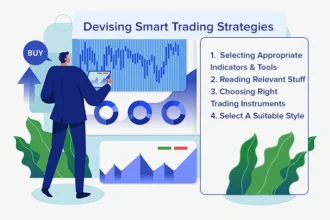The online education industry has genuinely been advocating for its use in schools, and the Internet of Things has found its way into the lives of more and more people worldwide. Yet, what exactly is IoT in the Education Sector? What is it that can give students, whether in college or below? Does this mean for academic institutions?
What is IoT?
Simply put, the IoT is a way for various devices to “communicate” or interact with each other. For example, machines that know someone has been looking up where to find research papers for sale communicate to another machine that can keep track of that information. It goes beyond understanding, however, if someone wants to find a research paper that is on sale. It transforms specific tasks into fully autonomous tasks, such as data collection.
Listed below are few advantages of using IoT in the Education Sector
Staying Linked
The IoT can help teachers and students stay linked. That’s real, no matter where in the world you’re. Instead of waiting for the next day of school to contact your teacher when you have a concern, now you can easily use a variety of services provided to stay in touch with them or the rest of your class. If you need help with an English research paper, don’t understand what APA means or need historical help, it’s all there online.
Keeping Things Secured
Security is one of the leading educational concerns. Knowing where the students are and what they are doing is still at the forefront of the mind of virtually every staff member. What else would they do other than install top-quality security systems? Okay, this is under the influence of the IoT. There are ways you can keep track of students using the IoT, for example, by using RFID chip trackers.
Moving Beyond Books
If you have ever had to endure waiting for textbooks from college (especially those on sale), then you’re probably already aware that they’re a changing breed. Instead of being just the textbook, now the order always comes with access codes to different websites to assist with your academics. This will make it easier to complete your assignments, study, and even bring your notes together. While some are not pleased with the price tag, others enjoy using this new technology. This is mainly for the crowd at the college, but it’s also brought in by other schools.
Support to the Disabled
Yeah, it can also help those who have special needs! One of the most recent ways it is used is to translate sign language into adequately written English. That will make it easier for those who rely on it (such as students who are deaf, hard of hearing, or mute). This will mean, for others, a return to regular classrooms with their peers, rather than those for people with special needs only.
Getting Personal
Custom classes are something that is frequently advocated but never really completed. That’s because, in a traditional classroom, it’s too much to ask teachers to adjust their curriculum to fit every person. However, machines will do this for them with the IoT. Computers can evaluate the students’ issues, and concentrate more on those, rather than testing them on things they know well. This versatility may mean students who would otherwise fall through the cracks will receive the support and attention they need to be useful at school.
Classroom Monitoring
Whether it is only attendance or keeping track of those who are better at participating, IoT in the Education Sector is useful to manage the classroom. This takes off yet another burden from the hands of a teacher. Now, they don’t need to think about collecting or grading homework, monitoring attendance, and a slew of other things that took up a vast majority of their time. Alternatively, they can focus on what they are supposed to do: teaching. In making everything else automatic, there would be more teachers devoting time to their students.
Hands-On Learning
What kind of hands-on learning? In the modern world, the type that matters the most: Machine Learning how to use computers and other digital tools today is just as important as being able to write in cursive years ago. Since our society accepts this technology, it makes only sense that children should be taught regularly. This can be a good thing to have this hands-on experience, particularly when they get older and go to college or join the workforce.
Possible Drawbacks of IoT
There are, of course, possible downsides of getting the IoT into the classroom. The first major issue is one of privacy. As many of the people who frequently use the internet are aware, privacy may be somewhat subjective. The information isn’t always as secure as you would think, and just waiting to happen can be a nightmare to have the data confiscated from students or stolen. Another concern is the difference between those who have access to the IoT and those who don’t. In the world, and even in most developed countries, there are many areas where such a thing is simply not feasible in any school because of funding. These infrastructures can be expensive, and some schools just aren’t up to the challenge of finding the money for it.
The Internet of Things has a great deal to give to those who are in school, regardless of educational level. While there are downsides, it’s worth remembering the positive ones.










